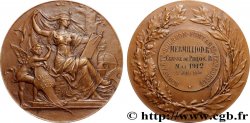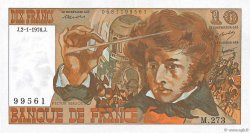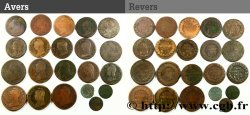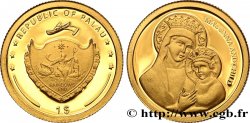fmd_289081 - Essai de 20 francs Turin, en cupro-nickel 1939 Paris VG.-
недоступный.
Товар уже продан в нашем интернет-магазине (2015)
Цена: : 3 500.00 €
Товар уже продан в нашем интернет-магазине (2015)
Цена: : 3 500.00 €
Тип Essai de 20 francs Turin, en cupro-nickel
Дата: 1939
Монетный двор / Город: Paris
Металл: copper nickel
Диаметр: 34,94 mm
Ориентация осей монеты: 6 h.
Вес: 17,04 g.
Век: striée
Редкость: R3
Комментарии о состоянии
Exemplaire parfait mais surface terne quoique avec de jolis reflets au droit. Une petite tache noire sur le cou
Лицевая сторона
Аверс: легенда: REPUBLIQUE - FRANÇAISE.
Аверс: описание: Tête de la République à droite, coiffée d'un bonnet phrygien lauré ; signé P. TURIN sous le buste.
Обратная сторона
Реверс: легенда: 20 / FRANCS / 1939 / LIBERTE / EGALITE / FRATERNITE / ESSAI.
Реверс: Описание: Entre deux épis de blé verticaux.
Комментарий
Cet essai n’est pas répertorié dans les principaux ouvrages de référence si ce n’est Gadoury qui indique “épreuve en cupro-nickel”. On notera que le diamètre est, contrairement aux autres essais de la collection Pierre, pratiquement identique au standard émis. Le millésime de cet essai, 1939, est particulièrement intéressant ; la proximité de la guerre a probablement suggéré des essais en métal non précieux, sans comprendre que, durant une guerre moderne, les métaux stratégiques sont aussi des métaux précieux.
This test is not listed in the main reference works except for Gadoury who indicates “cupro-nickel proof”. It should be noted that the diameter is, unlike the other tests in the Pierre collection, practically identical to the issued standard. The vintage of this test, 1939, is particularly interesting; the proximity of the war probably suggested tests in non-precious metal, without understanding that, during a modern war, strategic metals are also precious metals
This test is not listed in the main reference works except for Gadoury who indicates “cupro-nickel proof”. It should be noted that the diameter is, unlike the other tests in the Pierre collection, practically identical to the issued standard. The vintage of this test, 1939, is particularly interesting; the proximity of the war probably suggested tests in non-precious metal, without understanding that, during a modern war, strategic metals are also precious metals








 Cообщить об ошибке
Cообщить об ошибке Распечатать страницу
Распечатать страницу Отправить мой выбор
Отправить мой выбор Задать вопрос
Задать вопрос Consign / sell
Consign / sell
 Информация
Информация













